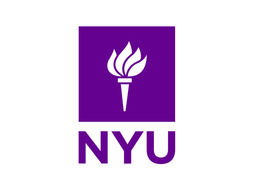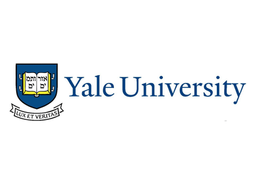Clean Tech Competition - 8 Tips to Help You Win
As a field, technology is one that requires both academic experience and practical exposure. If you’re a high school student who’s looking to pursue a career and further education in tech, engineering or sustainable innovation, participating in tech-related competitions is a place to start. And it enhances your resume! Highlighting your competitive experience shows that you are motivated, up to date with the latest developments in the field, and that you wish to make an impact.
One such competition you can consider is the Spellman HV's Clean Tech Competition. In this article, we’ve broken down the various aspects of this competition, and offered a few strategies to help you ace it.
What is the Clean Tech Competition?
The Spellman HV Clean Tech Competition is a global challenge that encourages young scientists to showcase their skills in innovating sustainable solutions to environmental problems. Participating in this competition demonstrates a student’s commitment to sustainability, and can be a great boost to their college applications.
Spellman High Voltage is a leading supplier of precision DC high voltage power supplies, X-Ray generators and Monoblock® X-Ray sources for medical, industrial and scientific applications. For over a decade, the company has conducted theClean Tech Competition, administered by the Center for Science Teaching & Learning (CSTL), challenging students across the world to make a difference in fighting climate change and find ways to develop and leverage clean energy.
Unlike many tech competitions, this one is focused on encouraging students to identify issues that matter to them and develop innovative solutions. The competition provides a multi-disciplinary, project-based experience for young scientists passionate about building a healthier planet. To implement your research, the competition will provide a $200 stipend.
A notable aspect of the Spellman HV Clean Tech Competition is its inclusivity. Any student's research related to sustainable technology is eligible for submission, regardless of the project's scale. The competition organizers typically update their website with an implementation guide and sustainability rubric, and are expected to do so for the future competition. The following will give you a sense of what a clean tech competition rubric may look like whereby judges emphasize innovation, product design, and skillset. These resources aim to guide participants in starting a project in their classrooms or at home.
Due to the global challenges posed by the Covid-19 pandemic, the competition has transitioned to a virtual format. This shift ensures that students from anywhere in the world can participate without the constraints of physical attendance. This shift also allows for a broader range of projects and eliminates the need to turn away students whose projects may not align with specific themes or categories.
Despite the virtual format, the core focus of the competition remains unchanged. Students are required to identify a problem related to the natural world and resource-use, thoroughly research and analyze the issue, and design a sustainable solution using clean technology.
Dates, Eligibility, Structure, Prizes & More Who Can Participate?
Students aged 15-18 are eligible to take part in this competition, in teams of 1-3 members.
Is there a participation or registration fee?
No, registration and participation is entirely free.
Information on registration and participation for future programs will be available on both Spellman HV and CSTL websites. Typically, registrations close by April-end.
How is the competition structured?
The Clean Tech competition is conducted in two rounds:
Round One: Online Paper Submission
For the first round, students are required to submit a 5-15 page paper online by April-end. This paper serves as the foundation of the students’ project – where they must identify a specific problem, its scale, affected populations, and include a detailed analysis of the issue's foundations and causes. The rubric for this round will be available on the competition website, which can give you some insight into the evaluation criteria.
Round Two: Virtual Presentations
If your team is selected as a finalist, you will progress to the second round. In this round, students must virtually present their research and prototype to the competition judges. The presentations will take place in a live video format. During the presentation, you will be asked to show how you’ve spent the $200 stipend to implement your research and construct a prototype. The finals are scheduled for August 11, with additional details available on the competition website. In the past years the competition has been held virtually online due to the COVID-19 pandemic but is likely to change in future years. Winners will be announced after the second round virtual presentations.
Prizes
The Clean Tech competition winners receive over $20,000 in awards in total.
The first-place winner will receive $7,000 in prize money; $5,000 for second, $3,500 for third; while fourth through tenth places will each be awarded $1,000.

Strategies for Success: 8 Tips to Ace the Clean Tech Competition
Now that we’ve covered the details of the competition, let’s go over a few tips that can increase your chances of winning this competition!
Leverage the resources available to you
Study past winning submissions
Make sure you understand the prompt well
Engage in comprehensive research
Collaborate with your team
Start early and stay consistent
Practice your presentation and work on refining it
Embrace the learning journey of the competition
Our Review
The Spellman HV Clean Tech Competition provides a unique opportunity to make a meaningful contribution to sustainability efforts while gaining recognition for your innovative solutions. By incorporating these tips into your approach, you can not only participate but (hopefully!) excel in this global competition. Remember, the journey of designing, building, and presenting a sustainable solution is a valuable learning experience, regardless of the competition outcome.
If you're looking for a real-world internship that can help boost your resume while applying to college, we recommend Ladder Internships!
Ladder Internships is a selective program equipping students with virtual internship experiences at startups and nonprofits around the world!
The startups range across a variety of industries, and each student can select which field they would most love to deep dive into. This is also a great opportunity for students to explore areas they think they might be interested in, and better understand professional career opportunities in those areas. The startups are based all across the world, with the majority being in the United States, Asia and then Europe and the UK.
The fields include technology, machine learning and AI, finance, environmental science and sustainability, business and marketing, healthcare and medicine, media and journalism and more.
You can explore all the options here on their application form. As part of their internship, each student will work on a real-world project that is of genuine need to the startup they are working with, and present their work at the end of their internship. In addition to working closely with their manager from the startup, each intern will also work with a Ladder Coach throughout their internship - the Ladder Coach serves as a second mentor and a sounding board, guiding you through the internship and helping you navigate the startup environment.
Cost: $1490 (Financial Aid Available)
Location: Remote! You can work from anywhere in the world.
Application deadline: April 16 and May 14
Program dates: 8 weeks, June to August
Eligibility: Students who can work for 10-20 hours/week, for 8-12 weeks. Open to high school students, undergraduates and gap year students!
One other option – Lumiere Research Scholar Program
If you are passionate about research in tech, clean energy or sustainability, you could also consider applying to the Lumiere Research Scholar Program, a selective online program for students I founded with researchers at Harvard and Oxford. Last year, we had over 4000 students apply for 500 spots in the program! You can find the application form here.
Stephen is one of the founders of Lumiere and a Harvard College graduate. He founded Lumiere as a PhD student at Harvard Business School. Lumiere is a selective research program where students work 1-1 with a research mentor to develop an independent research paper.
Image Source: Spellman HV










